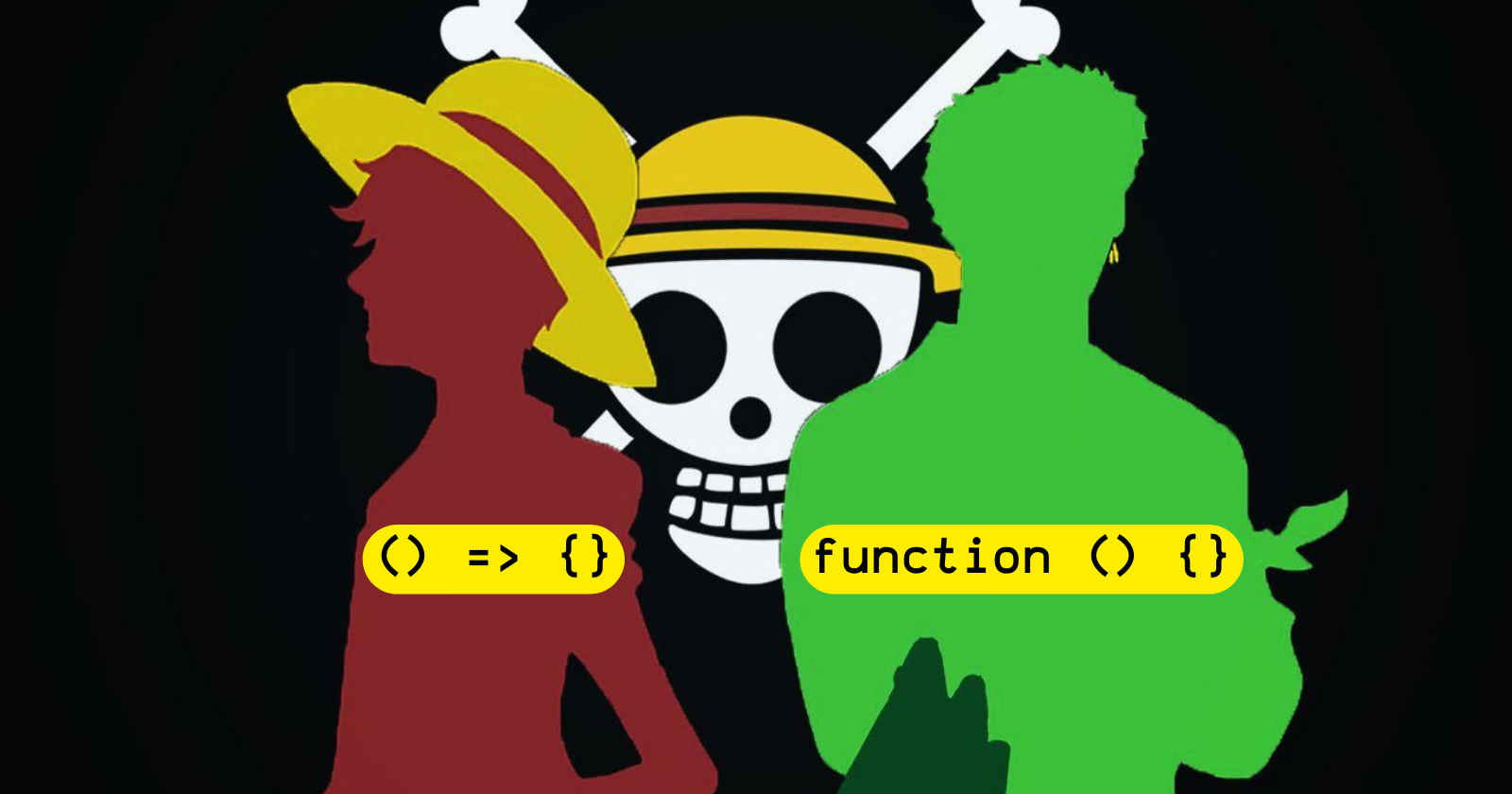Unleash Your Coding Crew: Regular vs. Arrow Functions with One Piece!
 Shivam Raj
Shivam Raj
Calling all code pirates and aspiring nakama (crewmates)! ☠️ This week, we set sail on the high seas of programming with the legendary Straw Hat Pirates! Luffy and his crew are about to unlock the secrets of functions - the essential building blocks of any program.
Just like Luffy assembles his diverse crew for different tasks, functions allow us to create reusable blocks of code for specific jobs. But how do we call these functions to action? Buckle up, because we're about to meet two key players in our coding crew: Regular Functions (The Stalwart Swordsman) and Arrow Functions (The Agile Monkey).
Meet Zoro, the Stalwart Swordsman: Regular Functions
Think of Zoro, the loyal swordsman, wielding his trusty blades. Regular functions are the OG crew members, declared with the function keyword, a name, and optional parameters (like Zoro's swords - tools he uses to accomplish tasks!).
Here's a breakdown of a regular function:
functionKeyword: This marks the beginning of a function declaration, just like Zoro announcing he's about to unleash a devastating attack.Function Name: Choose a descriptive name that reflects its purpose (e.g.,
calculateDistance). This helps others understand the function's role, just like Zoro's attack names tell us what to expect!Parameters (Optional): These are values passed to the function when it's called, like Zoro receiving specific instructions or targets. Think of them as the swords he wields in battle. They're enclosed in parentheses and separated by commas.
Function Body: This is the heart of the function, containing the code that gets executed when the function is called. Imagine Zoro unleashing his signature three-sword style attack - this is where the magic happens!
returnStatement (Optional): This sends data back from the function after it finishes its job, similar to Zoro delivering a powerful finishing blow and returning victorious.
Example: Let's Greet Our Crewmates!
function greet(name) { // Function name & parameter
return "Yo ho ho! Welcome aboard, " + name + "!"; // Function body & return statement
}
let message = greet("Sanji"); // Calling the function & passing an argument (Sanji)
console.log(message); // Outputs: "Yo ho ho! Welcome aboard, Sanji!"
Enter Luffy, the Agile Monkey: Arrow Functions
Now let's meet the captain himself, Luffy! Arrow functions are the nimble ninjas of the crew, offering a more concise way to define functions for quick actions. Imagine Luffy using Gear Second for a speedy attack - that's the agility arrow functions bring to the table!
Here's what makes them special:
Cleaner Syntax: They use the arrow (
=>) instead of thefunctionkeyword, streamlining the declaration process. Think of it like Luffy's streamlined fighting style compared to Zoro's more traditional stance.Implicit Return: For single-line functions, the return statement is implied, making the code even more concise. It's like Luffy delivering a powerful punch without needing a lengthy windup.
Example: Another Crewmate Arrives!
const greet = (name) => "Yo ho ho! Welcome aboard, " + name + "!"; // Arrow function with implicit return
let message = greet("Nami");
console.log(message); // Outputs: "Yo ho ho! Welcome aboard, Nami!"
Function Face-Off: Regular vs. Arrow
Now that we've met our key players, let's see how they compare:
| Feature | Regular Functions | Arrow Functions |
| Declaration Syntax | function functionName | const/let functionName |
| Keyword | function | (None) |
| Parameters | Optional | Optional |
| Function Body | Required | Required |
| Return Statement | Optional (use return) | Implicit for single line |
| Flexibility | More flexible | Less flexible (no own this binding) |
| Use Cases | Complex tasks, need more control | Simple tasks, expressions |
So, Who Takes the Captain's Seat?
Both regular functions and arrow functions achieve the same goal! Regular functions offer more flexibility for complex tasks, while arrow functions shine for their brevity. Imagine Zoro tackling a powerful enemy with his full arsenal, while Luffy uses a swift Gear Second attack to deal with a quick obstacle.
Ready to Master the Coding Seas?
This is just the beginning of your coding adventure! Explore other function types like recursive functions (think nesting Usopp's Pop Greens!) and higher-order functions (the strategic commanders of the crew!). Stay tuned for future lessons where your favorite anime characters help you conquer the world of programming.
Don't forget to leave a comment below! Which other One Piece crew member would you like to see tackle coding concepts next? Let us know in the comments and together, we'll build a powerful coding crew!
Subscribe to my newsletter
Read articles from Shivam Raj directly inside your inbox. Subscribe to the newsletter, and don't miss out.
Written by

Shivam Raj
Shivam Raj
Code by Day, Anime by Night ✨ Frontend Dev with Anime Superpowers 🤖 Learning Code & Creating Like Heroes Learn to Code with Anime #LearntoCodewithAnime